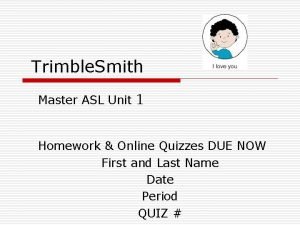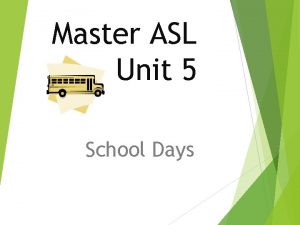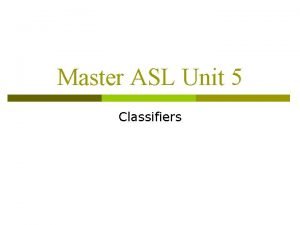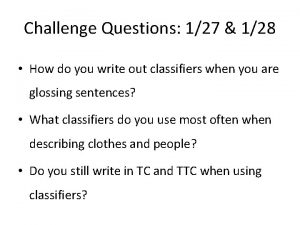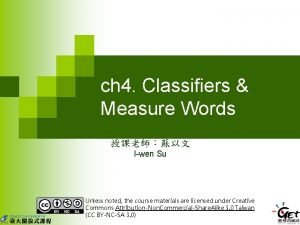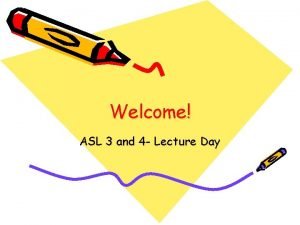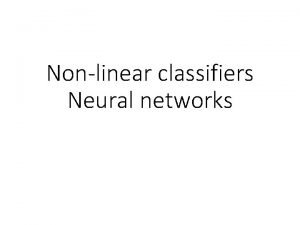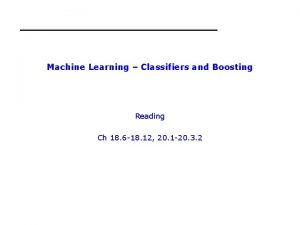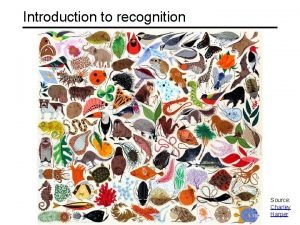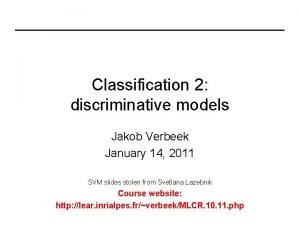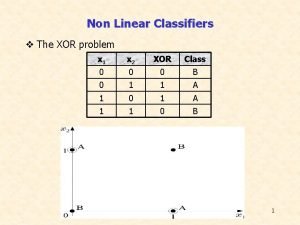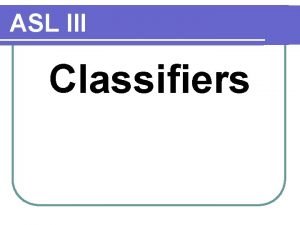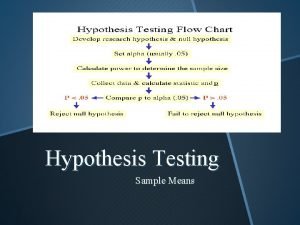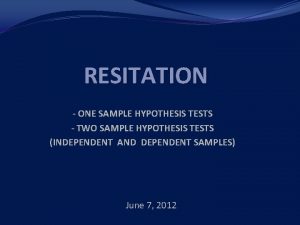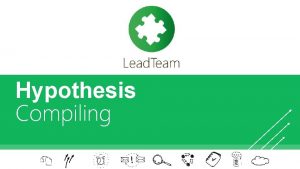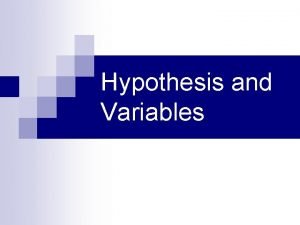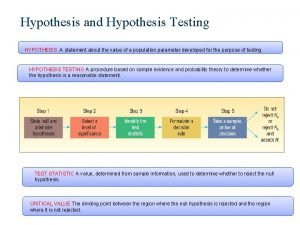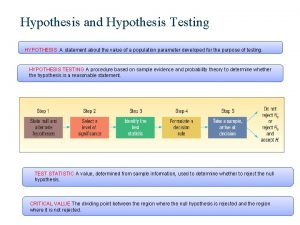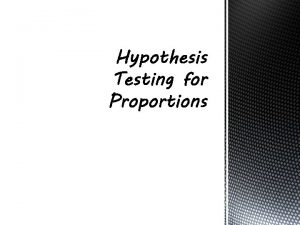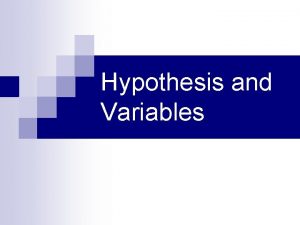COMPARING CLASSIFIERS SAMPLE ERROR Error of hypothesis h














- Slides: 14

COMPARING CLASSIFIERS

SAMPLE ERROR • Error of hypothesis h with respect to function f and sample S

TRUE ERROR • Error of hypothesis h with respect to function f and distribution D

THE QUESTION • We wish to know error. D(h) • We can only measure error. S(h) How good an estimate of error. D(h) is provided by error. S(h)?

CONFIDENCE INTERVAL • If h is a discrete-valued hypothesis, |S|=n 30, and examples are drawn independently of h and one another, then with N% probability: Confidence level N% 50% 68% 80% 95% 98% 99% Constant z. N 0. 67 1. 28 1. 64 1. 96 2. 33 1. 00 2. 58

A FEW USEFUL FACTS (I) • The expected value of a random variable X, also know as the mean, is defined by: n The Binomial distribution gives the probability of observing r heads in a series of n independent coin tosses, if the probability of heads in a single toss is p

A FEW USEFUL FACTS (II) • The Normal distribution is the well-known bell-shaped distribution, arising often in nature: n Expected values:

A FEW USEFUL FACTS (III) • Estimating p from a random sample of coin tosses is equivalent to estimating error. D(h) from testing h on a random sample from D: • Single coin toss Single instance drawing • Probability p that a single coin toss is head probability that single instance is misclassified • Number r of heads observed over a sample of n coin tosses number of misclassifications observed over n randomly drawn instances • Hence, we have: • p = error. D(h) • r/n = error. S(h)

A FEW USEFUL FACTS (IV) • An random variable can be viewed as the name of en experiment whose outcome is probabilistic • An estimator is a random variable X used to estimate some parameter p (e. g. , the mean) of an underlying population • The bias of an estimator X is defined by: n An estimator X is unbiased if and only if:

A FEW USEFUL FACTS (V) • Since, we have: • p = error. D(h) • r/n = error. S(h) • E[XBinomial] = np • It follows that: • E[error. S(h)] = E[r/n] = E[r]/n = np/n = p = error. D(h) • Hence, error. S(h) is an unbiased estimator of error. D(h)

COMPARING HYPOTHESES • We wish to estimate error. D(h 1) - error. D(h 2) • We measure error. S 1(h 1) – error. S 2(h 2), which turns out to be an unbiased estimator • In practice, it is OK to measure on the same test set error. S(h 1) – error. S(h 2), which has lower variance

COMPARING CLASSIFIERS (I) • We wish to estimate n In practice, we have a sample Do: Split into train/test sets and measure:

COMPARING CLASSIFIERS (II) • Problems: • We use error. T 0(h) to estimate error. D(h) • We measure the difference on S 0 alone (not the expected value over all samples) • Improvement: • Repeatedly partition dataset Di into N disjoint train (Si)/test (Ti) sets (e. g. , using n-fold Xval) • Compute:

COMPARING CLASSIFIERS (III) • Derive: • t is known as the student-t statistic. • Choose a significance level q • With N-1 degrees of freedom, if tc exceeds the value in the table then the difference is statistically significant
